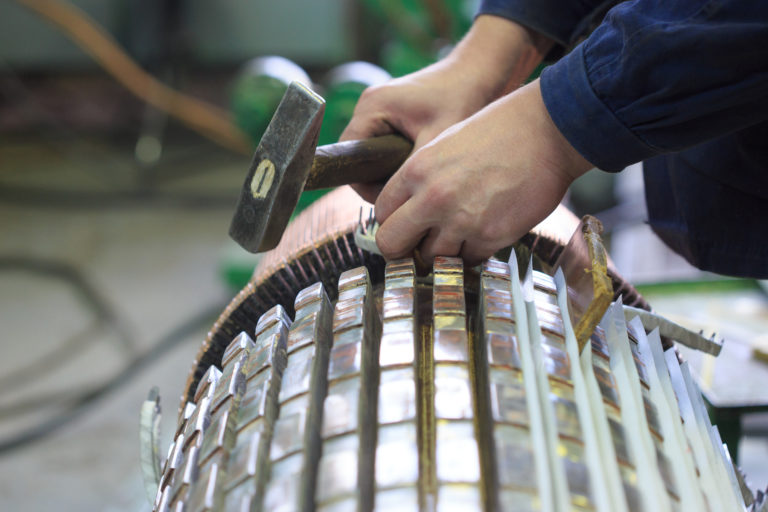Ensure to get a Good Quality Motor Repair

Stator of a big electric motor. repair factory. (Image source: AEMT)
There are several ways that a poor-quality motor repair can impact a business. Firstly, there could be issues with the energy efficiency of a badly repaired motor which can lead to unnecessary increases in costs. However, if repaired well, a motor should be at least as efficient as when it was new. This was demonstrated by a study carried out by the Association of Electrical and Mechanical Trades (AEMT) and the US-based Electrical Apparatus Service Association (EASA), which used independent testing facilities to confirm higher efficiency IE3 units are unaffected by a repair that uses good practice procedures.
A motor that has not been well repaired can also be prone to failure earlier than expected. Winding faults can lead to premature insulation breakdown, while poorly fitted bearings can fail sooner than expected. If these unexpected faults occur, the cost of unintended downtime could be massive for some businesses.
There are ways to identify a good quality repair, and this can start before the repairer even sets eyes on the motor. The repairer should take the time to understand what the client needs. They should talk to the customer to find out about the motor, where and how it is being used, and what the customer wants from the repair.
When inspecting a repaired motor, generally, if the motor looks like it has been well treated on the outside, it is likely that it will have been well treated on the inside. For example, when the motor is returned, are the mounting faces free of paint? If they have been well masked when the motor was painted, the motor will be much easier to mount accurately. Equally, if the terminal box looks nice and clean and there are new nuts and washers on the terminals, that would be a sign that care has been taken. Other small but notable signs include the fitting of new grease nipple caps. They cost a few pence but can make a big difference. Also, look for mesh wrap or some form of protection on the shaft. While silica gel packs inside the terminal box and anti-corrosion coatings can make a difference, especially if the motor may not go straight into service and is in storage for any time.
International Repair Standard
One way to ensure a quality repair is to ask your provider if they follow the international repair standard (IEC 60034-23). The standard establishes the benchmarks for repairing rotating equipment, maintaining efficiency levels, high standards of quality control and improving efficiency in associated pieces of equipment.
The standard covers many other aspects of the repair process. It sets out requirements for the maximum temperatures used in an oven to burn off old windings to prevent damage to the steel laminations. It covers which insulation grades should be used, the approach to rebuilding bearing seats, the selection of replacement bearings and grease, and a range of other factors.
IEC60034-23 also sets out what tests should be carried out on a motor before and after it is repaired and how the test equipment should be maintained and calibrated.
In line with the repair standard, a good motor repairer should have a repair specification they can give customers, showing what will be done. And when the motor comes back from repair, there should be an accurate record of what has been done, including certificates covering aspects such as balancing, vibration measurement, tolerances, and surge test results.
So, to ensure you get levels of reliability and efficiency from your next motor repair, ask your repair provider if they work to the international repair, overhaul and reclamation of rotating equipment standard, IEC 60034-23.







